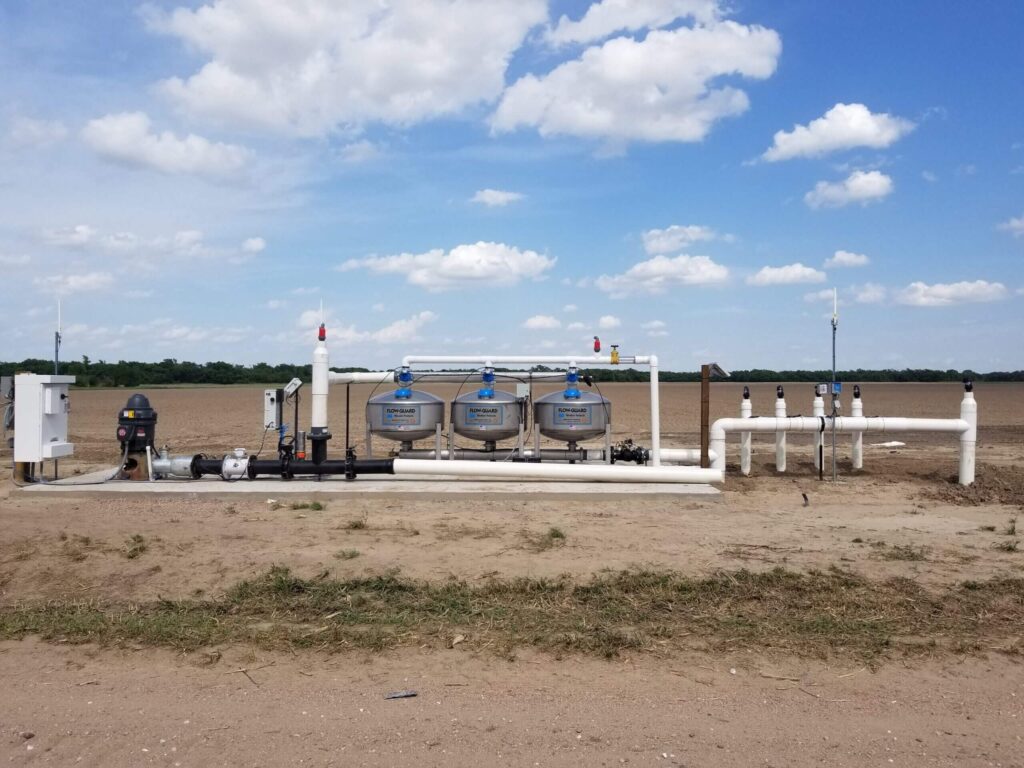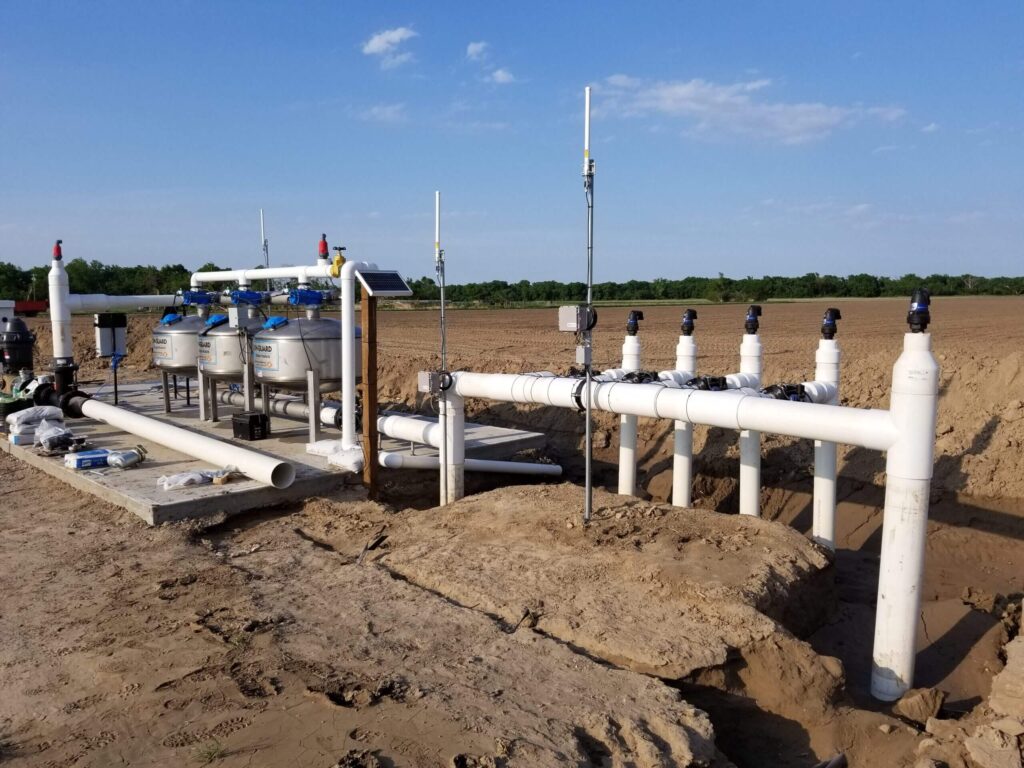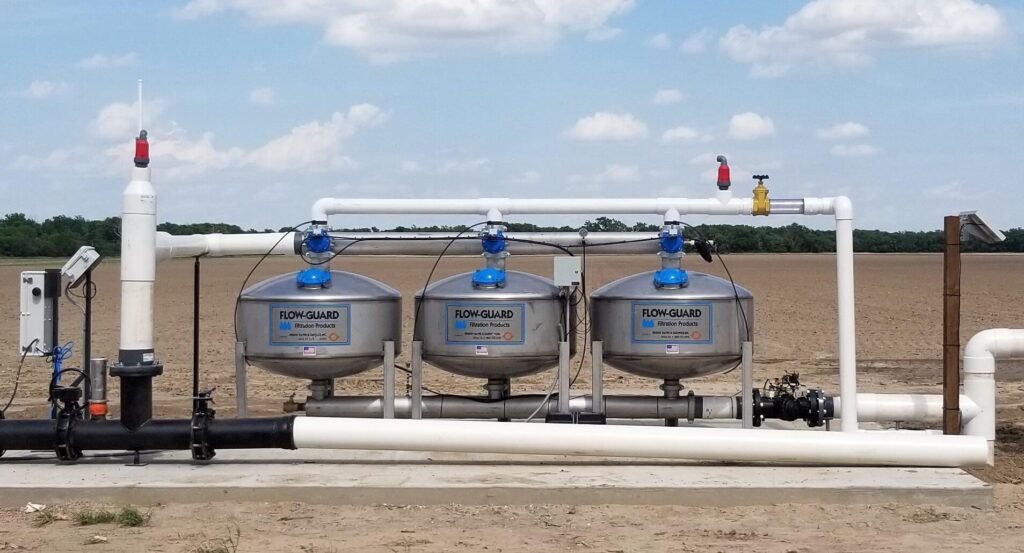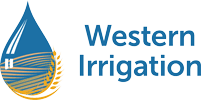How Agricultural Water Filtration Protects Your Crops and Equipment
How Agricultural Water Filtration Protects Your Crops and Equipment
An Agricultural Water Management Plan is more than a document—it’s a strategic blueprint for your farm’s profitability, sustainability, and resilience in the face of a changing climate. Water is no longer something farmers can take for granted. Droughts, floods, and shifting weather patterns are putting new pressures on agriculture, making smart water use not just important, but essential.
Agriculture water filtration plan goes far beyond simple irrigation scheduling. It looks at your entire on-farm water cycle—where your water comes from, how it’s stored, how it’s applied, and how it impacts soil health and long-term productivity. Think of it as a proactive business strategy that aligns efficiency with sustainability, protecting both your bottom line and the land you depend on.
In this article, we’ll break down the essential components of a comprehensive water management plan and explain why every modern farming operation should have one. You’ll learn how to assess your water resources, design a system that matches your soil and crop needs, and implement practices that conserve water while boosting yields. By the end, you’ll have a clear roadmap for developing and putting a plan into action—one that can safeguard your farm today and strengthen it for the future.
What Is an Agricultural Water Management Plan?
Beyond Irrigation Scheduling
A true plan is a holistic strategy. It includes an inventory of your water sources, an analysis of crop needs, an evaluation of your current irrigation system’s efficiency, and a strategy for future improvements. This comprehensive approach ensures that every drop of water is used effectively to support your farm’s overall health and productivity.
A Living Document
Your plan should not be a “set it and forget it” binder on a shelf. It must be reviewed and updated regularly to adapt to changes in cropping patterns, technology, weather variability, and local water regulations. By treating it as a dynamic guide, you can continuously optimize your water use and respond to new challenges and opportunities.
Core Components
The key elements of a robust water management plan include a detailed water budget, a thorough irrigation system performance review, and effective soil management practices. It also incorporates strategies for runoff and drainage control and a contingency plan for drought, ensuring your farm is prepared for a variety of conditions.

The First Step: Auditing Your Water Resources
Mapping Your Water Sources
The process begins with identifying and quantifying all available water sources on your property. This includes groundwater wells, surface water rights from rivers or canals, and any recycled or stored water. A complete inventory provides a clear picture of the resources you have to work with throughout the year.
Assessing Water Quality
You need to conduct a thorough analysis of each water source. This assessment identifies potential issues like high salinity, unwanted mineral content, or biological contaminants that could impact your crop health and irrigation equipment. Understanding your water quality is crucial for making informed decisions about treatment and application.
Calculating a Water Budget
A water budget involves balancing your available water supply against your crop’s demand throughout the growing season. This detailed calculation helps you identify potential shortfalls and plan your water allocations effectively. It is an essential tool for ensuring you have enough water to meet your production goals.
Evaluating and Optimizing Your Irrigation System
Measuring Distribution Uniformity (DU)
A key part of your plan is testing how evenly your current system applies water across a field. A low Distribution Uniformity (DU) score indicates wasted water, wasted energy, and inconsistent crop growth that needs to be addressed. Improving your DU is a direct path to greater efficiency.
Identifying Opportunities for Efficiency Gains
The plan should pinpoint weaknesses in your current infrastructure. This could mean converting from flood to drip irrigation, upgrading nozzles on a pivot, or improving your filtration system to prevent clogging and maintain consistent water flow. These upgrades can lead to significant savings in water and energy.
Integrating Smart Technology
A modern plan incorporates technology like soil moisture sensors, weather stations, and remote monitoring. This technology allows you to shift from a calendar-based schedule to precise, data-driven irrigation decisions. By watering only when and where it’s needed, you maximize efficiency and crop health.
Linking Water Management to Soil Health
Improving Water Infiltration
Your plan should include soil management practices that enhance how well your soil absorbs water. This can involve conservation tillage, planting cover crops, and applying compost to reduce surface runoff. Better infiltration means more water gets to your crop’s root zone where it is needed most.
Increasing Water Holding Capacity
Healthy soil with high organic matter acts like a sponge, storing water for crops to use during dry periods. Your plan will outline strategies to build soil carbon, which increases its ability to hold water and makes your farm more resilient to drought. This is a long-term investment in your land’s productivity.
Preventing Soil Salinity Issues
A comprehensive water management plan includes a strategy for managing salts. This involves using high-quality water when possible and applying the correct amount of water to leach harmful salts below the root zone. Proper salt management is vital for maintaining long-term soil health and crop yields.

The Financial and Regulatory Imperative
Reducing Input Costs
A well-executed plan directly lowers your operational expenses. You will use less water, consume less energy for pumping, and apply fertilizers more efficiently, all of which boost your bottom line. These savings can make a significant difference in your farm’s profitability.
Ensuring Regulatory Compliance
In many regions, water management plans are becoming mandatory. Having a proactive and well-documented plan ensures you meet local and state requirements and maintain your license to operate. This protects your business and demonstrates responsible stewardship of a shared resource.
Increasing Access to Grants and Cost-Share Programs
Many government programs that offer financial assistance for irrigation upgrades require a formal water management plan. Having one prepared makes you a more competitive applicant for these funds. It shows you have a clear strategy for using financial assistance effectively.
Planning for Uncertainty: Drought and Climate Resilience
Developing a Drought Contingency Strategy
Your plan must answer the question: “What will I do if my water allocation is cut by 25%?” This involves prioritizing high-value crops and identifying which fields may need to be fallowed. A clear contingency strategy allows you to make difficult decisions quickly and minimize financial losses during a drought.
Exploring Water Storage and Recycling
A forward-looking plan assesses the feasibility of on-farm water storage, such as building a reservoir to capture winter rainfall. It also explores implementing systems to recycle and reuse tailwater, turning a potential waste stream into a valuable resource. These strategies can significantly increase your water security.
Adapting Crop Selection
In the long term, your plan may guide decisions about transitioning to more drought-tolerant crop varieties or species that are better suited to your region’s evolving climate. Adapting your crop mix is a powerful strategy for building a more resilient and sustainable operation.
Putting the Plan into Action
Setting Clear Goals and Timelines
A good plan has measurable objectives, such as “Increase distribution uniformity by 15% in three years” or “Reduce water use per acre by 10%.” These clear goals and timelines provide a roadmap for implementation and allow you to track your progress over time.
Working with Certified Professionals
Developing a robust plan often requires expertise. Partnering with a certified irrigation designer or crop consultant can ensure your plan is based on sound data and proven science. Their knowledge can help you avoid costly mistakes and maximize your return on investment.
Training and Team Involvement
For a plan to be successful, everyone on your team must understand their role in its execution. This includes training irrigators on how to use new technology and monitor system performance effectively. An engaged and knowledgeable team is essential for achieving your water management goals.

Western Irrigation: Comprehensive Irrigation Solutions We Offer
Subsurface Drip Irrigation (SDI) Systems
We specialize in designing and installing cutting-edge SDI systems that maximize water and nutrient efficiency. This technology delivers water directly to the root zone, leading to significant yield improvements and resource conservation for your farm. Let us show you how SDI can transform your operation.
Agricultural Water Filtration
By implementing our advanced water filtration solutions, you can protect your entire irrigation system from clogging, enhance water usage efficiency, and ensure long-term sustainability. Clean water is the foundation of an efficient system, and our filters are designed for reliability and performance.
Pumps, Parts, and Supplies
We maintain a comprehensive inventory of high-quality pumps, filters, tubing, and repair parts from trusted brands to keep your operation running smoothly with minimal downtime. You can rely on us for the parts and expertise you need to maintain your system.
Your Farm’s Future Starts Now
An Agricultural Water Management Plan is an essential tool for reducing costs, complying with regulations, improving soil health, and securing the long-term viability of your farm. Viewing the development of this plan not as a burden but as a strategic investment in the future of your operation is the first step toward building a more resilient and profitable enterprise. Begin the process today by auditing your current water use, and contact a qualified irrigation professional to help you develop a comprehensive plan tailored to your farm’s unique needs.
